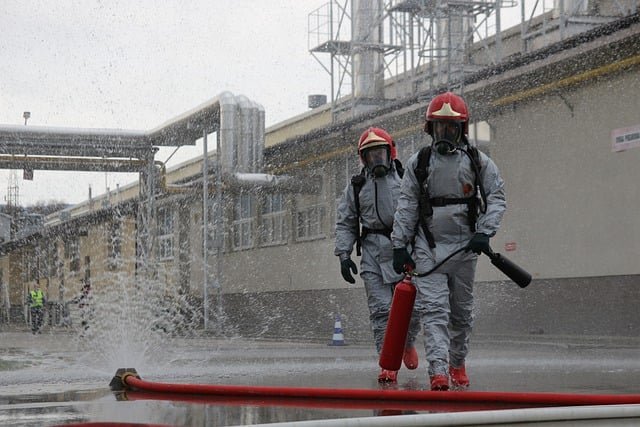Outdoor Emergency Essentials: A Complete Guide to Portable Toilets
When venturing into the great outdoors or facing emergency situations, sanitation often becomes a critical concern that many fail to adequately prepare for. Portable toilets offer a practical solution to this fundamental human need, providing convenience, hygiene, and dignity in environments where traditional restroom facilities are unavailable. Unlike conventional bathrooms, these mobile sanitation units are designed for temporary use and can be deployed in various settings with minimal infrastructure requirements. Understanding their operation, applications, and evolution can help individuals make informed decisions when selecting the appropriate portable toilet for their specific circumstances.

Modern portable sanitation solutions have become indispensable tools for maintaining hygiene and comfort in situations where traditional plumbing is unavailable. From weekend camping trips to disaster relief efforts, these innovative systems provide essential services while protecting both human health and environmental integrity.
The Origin and Development of Portable Toilets
The concept of portable sanitation dates back centuries, with early civilizations creating movable chamber pots and outdoor latrines. The modern portable toilet industry began in the 1940s when Harvey Heather invented the first fiberglass portable restroom for shipyard workers. This innovation addressed the need for convenient, hygienic facilities at construction sites and outdoor work locations. Over the decades, technological advances have transformed these basic units into sophisticated systems featuring hand sanitizers, ventilation systems, and waste treatment capabilities. Today’s portable toilets incorporate lightweight materials, improved waste management systems, and enhanced user comfort features that make them suitable for diverse applications.
How Portable Toilets Work
Portable toilet systems operate through various mechanisms depending on their design and intended use. Traditional chemical toilets use specialized chemicals to break down waste and control odors in a holding tank. Composting toilets employ natural decomposition processes, using materials like peat moss or sawdust to facilitate bacterial breakdown of waste. Flushable portable toilets feature small water tanks that provide flushing action while storing waste in separate holding tanks. Many modern units include ventilation fans to reduce odors and improve air circulation. The waste management process typically involves regular pumping and cleaning by specialized service companies, ensuring sanitary conditions and proper waste disposal according to environmental regulations.
Application Scenarios of Portable Toilets
Portable toilets serve numerous purposes across different environments and situations. Construction sites rely on these units to provide worker facilities in areas lacking permanent infrastructure. Outdoor events such as festivals, concerts, and sporting events use portable toilets to accommodate large crowds. Camping and recreational vehicle enthusiasts utilize compact portable toilets for extended outdoor stays. Emergency response situations, including natural disasters and humanitarian crises, depend on portable sanitation to maintain public health. Military operations and remote work sites also benefit from these mobile facilities. Additionally, residential applications include temporary use during home renovations or as backup systems for septic tank failures.
Cost Analysis and Provider Comparison
Understanding the financial aspects of portable toilet solutions helps in making informed decisions for various needs. Rental costs typically range from basic to premium options depending on features and service frequency.
| Service Type | Provider | Cost Estimation |
|---|---|---|
| Basic Unit Rental | United Site Services | $75-150/month |
| Deluxe Unit Rental | Waste Management | $125-250/month |
| Purchase - Basic | Dometic | $150-400 |
| Purchase - Composting | Nature’s Head | $900-1,200 |
| Event Rental | Portable Restroom Trailers | $200-500/day |
Prices, rates, or cost estimates mentioned in this article are based on the latest available information but may change over time. Independent research is advised before making financial decisions.
The Environmental Impact of Portable Toilets
Portable toilets play a significant role in environmental protection when properly managed. These systems prevent human waste from contaminating soil and water sources, particularly important in sensitive ecosystems and wilderness areas. Composting toilets offer the most environmentally friendly option by converting waste into useful compost material without requiring water or chemicals. However, chemical toilets raise concerns about the environmental impact of formaldehyde and other preservatives used in waste treatment. Modern eco-friendly alternatives use biodegradable chemicals and enzyme-based treatments that minimize environmental harm. Proper waste disposal and treatment at certified facilities ensure that portable toilet use doesn’t negatively impact local ecosystems or water supplies.
The Challenges and Future of Portable Toilets
The portable toilet industry faces ongoing challenges while working toward innovative solutions. User acceptance remains a significant hurdle, as many people associate portable toilets with unpleasant experiences. Manufacturers are addressing this through improved designs, better ventilation, and enhanced cleaning protocols. Maintenance and servicing logistics present operational challenges, particularly in remote locations or during large events. Future developments focus on smart technology integration, including sensors that monitor waste levels and usage patterns. Solar-powered systems are becoming more common, providing lighting and ventilation without external power sources. Advances in waste treatment technology promise more efficient, environmentally friendly processing methods. The industry is also exploring self-contained units with advanced filtration and recycling capabilities that could reduce servicing requirements.
Portable toilets have evolved from basic necessity items to sophisticated sanitation solutions that serve diverse needs across multiple industries and applications. Their continued development addresses environmental concerns while improving user experience and operational efficiency. As technology advances and environmental awareness grows, portable toilets will likely become even more integral to outdoor activities, emergency preparedness, and sustainable waste management practices.




